 Asset Publisher
Asset Publisher
Nature reserves
 Martwy pomnik przyrody przy drodze do rezerwatu "Annabrzeskie Wąwozy". Fot. Jerzy Wilanowski
Martwy pomnik przyrody przy drodze do rezerwatu "Annabrzeskie Wąwozy". Fot. Jerzy Wilanowski
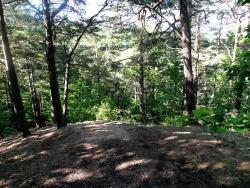 Rezerwat przyrody "Annabrzeskie Wąwozy". Fot. Jerzy Wilanowski
Rezerwat przyrody "Annabrzeskie Wąwozy". Fot. Jerzy Wilanowski
 Rezerwat przyrody "Annabrzeskie Wąwozy". Fot. Jerzy Wilanowski
Rezerwat przyrody "Annabrzeskie Wąwozy". Fot. Jerzy Wilanowski
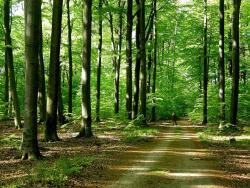 Rezerwat przyrody "Buczyna Szprotawska". Fot. Jerzy Wilanowski
Rezerwat przyrody "Buczyna Szprotawska". Fot. Jerzy Wilanowski
 Rezerwat przyrody "Buczyna Szprotawska". Fot. Jerzy Wilanowski
Rezerwat przyrody "Buczyna Szprotawska". Fot. Jerzy Wilanowski
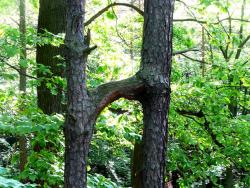 Sosnowe "H". Fot. Jerzy Wilanowski
Sosnowe "H". Fot. Jerzy Wilanowski
Reserves are sectioned off areas of unique natural values preserved in their natural or slightly modified state. Forest economy is limited in such areas. The total number of Polish nature reserves is 1441, including 671 forest reserves with total area amounting to over 61 000 ha. Nature reserves make 1.6 % of all forests managed by the State Forests.
There are 2 nature reserves within the territory of the Szprotawa Forest District – "Annabrzeskie Wąwozy" and "Buczyna Szprotawska" – with joint area of 208.43 ha.
"Buczyna Szprotawska" Nature Reserve
Established: 1965
Area: 152.32 ha
"Buczyna Szprotawska" Flora Reserve is located in Lubuskie Province, in Szprotawa Commune, in the vicinity of Leszno Dolne. It is the largest nature reserve located within the territory of Regional Directorate of the State Forests in Zielona Góra and second largest nature reserve in Poland.
The reserve has been established to protect mixed forest stands of natural origin including beech and having features of Carpathian beech wood.
In addition to approximately 85 ha of beech woods the reserve also includes dense Linden stands. It surely is an interesting phenomenon as the species is usually found to make a fraction in mixed broadleaf forest stands in Poland.
In addition to rich flora the District also abounds in animal species, with a variety of birds, reptiles, mammals and amphibians. Nearly 38 species of birds nest in the District, including rare species such as Stock Dove or Red-breasted Flycatcher. There are 15 species of mammals here, with Wild Boar, Deer, Roe Deer or Fox being the most common species. The area is also inhabited by 5 species of amphibians, such as: Common Toad, Common Frog, Moor Frog, Smooth Newt and Northern Crested Newt. Reptiles are represented by 3 species: Slow Worm, Viviparous Lizard and Sand Lizard.
The most interesting species inhabiting the reserve and the surrounding forests is Edible Dormouse, a protected species included on Polish Red List of Animals.
The reserve includes "Szlak Popielicy" (Edible Dormouse Trail) Educational Trail and two walking trails – yellow and red – to learn in detail about the nature of this interesting area.
"Annabrzeskie Wąwozy" Nature Reserve
Established: 1977
Area: 56.11 ha
"Annabrzeskie Wąwozy" Nature Reserve is located in Lubuskie Province, in Nowa Sól district, in Bytom Odrzański commune. It covers forested area on the edge of Odra valley full of hills and ravines, in the vicinity of Dalkowskie Hills. The reserve can boast one of the highest hills of the range (220 m above sea level) and maximum topographic prominence of about 60 m.
The ravines are known for seeps of subterranean water and stands of ash riparian forests including Grey Alder.
Upland peaks and eastern areas of the reserve are dominated by pine or pine and oak tree stands with occasional birch and beech trees. Species of undergrowth include Lily of the Valley, Sweet Woodruff, European Wild Ginger, Deer Fern, Bird's-nest Orchid and Common Ivy. Vascular plants are represented by 192 species, including 39 species of trees and bushes. The rarest species are Common Fragile Fern and Common Oak Fern.
Fauna of the reserve includes 4 species of amphibians, 2 species of reptiles, 34 species of birds and 12 species of mammals. The most common mammals include Deer, Roe Deer or Badger, amphibians – Common Toad, Common Frog and Smooth Newt, reptiles – Slow Worm and Viviparous Lizard, and birds – Common Chaffinch, Great Tit, European Robin, Wood Warbler and Coal Tit.
The reserve includes red walking trail named "Dziadoszan" and yellow educational trail.
 Asset Publisher
Asset Publisher
 Asset Publisher
Asset Publisher
Forests of our Forest District
Forests of our Forest District
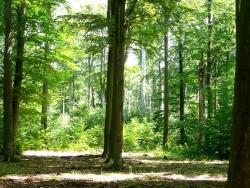 Lasy Nadleśnictwa. Fot. Jerzy Wilanowski
Lasy Nadleśnictwa. Fot. Jerzy Wilanowski
 Piękne lasy Nadleśnictwa. Fot. Jerzy Wilanowski
Piękne lasy Nadleśnictwa. Fot. Jerzy Wilanowski
 Bór iglasty. Fot. Jerzy Wilanowski
Bór iglasty. Fot. Jerzy Wilanowski
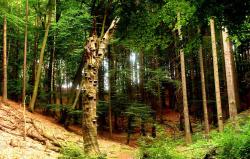 Rezerwat przyrody "Annabrzeskie Wąwozy". Fot. Jerzy Wilanowski
Rezerwat przyrody "Annabrzeskie Wąwozy". Fot. Jerzy Wilanowski
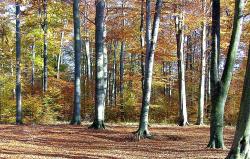 Krajobraz leśny. Fot. Jerzy Wilanowski
Krajobraz leśny. Fot. Jerzy Wilanowski
Szprotawa Forest District Inspectorate includes two Sub-districts – Szprotawa and Małomice – and manages a total area of over 19 000 ha. Its share of forested areas is only 28.2% making it the lowest ratio in the entire Regional Directorate of the State Forests in Zielona Góra. Forests managed by the Inspectorate include forests maintained for industrial purposes, protected forests and reserves.
Landscape of the Forest District is very heterogeneous.The area of Szprotawa Sub-district and the southern part of Małomice Sub-district is quite monochromatic, whereas the northern part of Małomice Sub-district is known for its undulating landscape (end moraine) at places turning into hills.
Geological structure
The Forest District is located within the area of Middle Polish Glaciation, in Mazovia-Podlasie Stadial.It is dominated by geological deposits originating from the Tertiary and the Quaternary, such as:fluvioglacial sands and gravels, river sands and gravels and boulder clay and sand.
Types of forest habitats
Forest habitats of the Forest District consist mainly of mixed and coniferous forests, with a small share of riparian forests and alder forests.Pine is the most common tree and the entire forest ecosystem consists in 60% of this species.The second most common species is Oak followed by Alder.
Plants and animals
Forests of Szprotawa Forest District are home to a variety of plant and animal species, including those under strict and partial protection.There are over 20 protected plant and lichen species in the District, including:Common Cottongrass, Common Toothwort, Marsh Gentian, Purple Foxglove, Yellow Iris, Stiff Clubmoss or Usnea Filipendula.
Mammal species includeWild Boar, Roe Deer, Deer, Fox, Raccoon Dog, Badger, Marten and Hare.Forests of Szprotawa Forest District are also inhabited by rare invertebrate species, including 9 species included on the Polish Red List of Animals.The species are:Medicinal Leech, Great Capricorn Beetle and Lucanus Cervus.
Apart from the protected invertebrate species there is a large number of amphibian and reptile species.The most interesting species includeViviparous Lizard, Smooth Snake and European Tree Frog.
Birds inhabiting the district also include many rare and endangered species:Black Stork, Whooper Swan, Wood Sandpiper, Eurasian Pygmy Owl, Boreal Owl and the pride of the District – White-tailed Eagle.


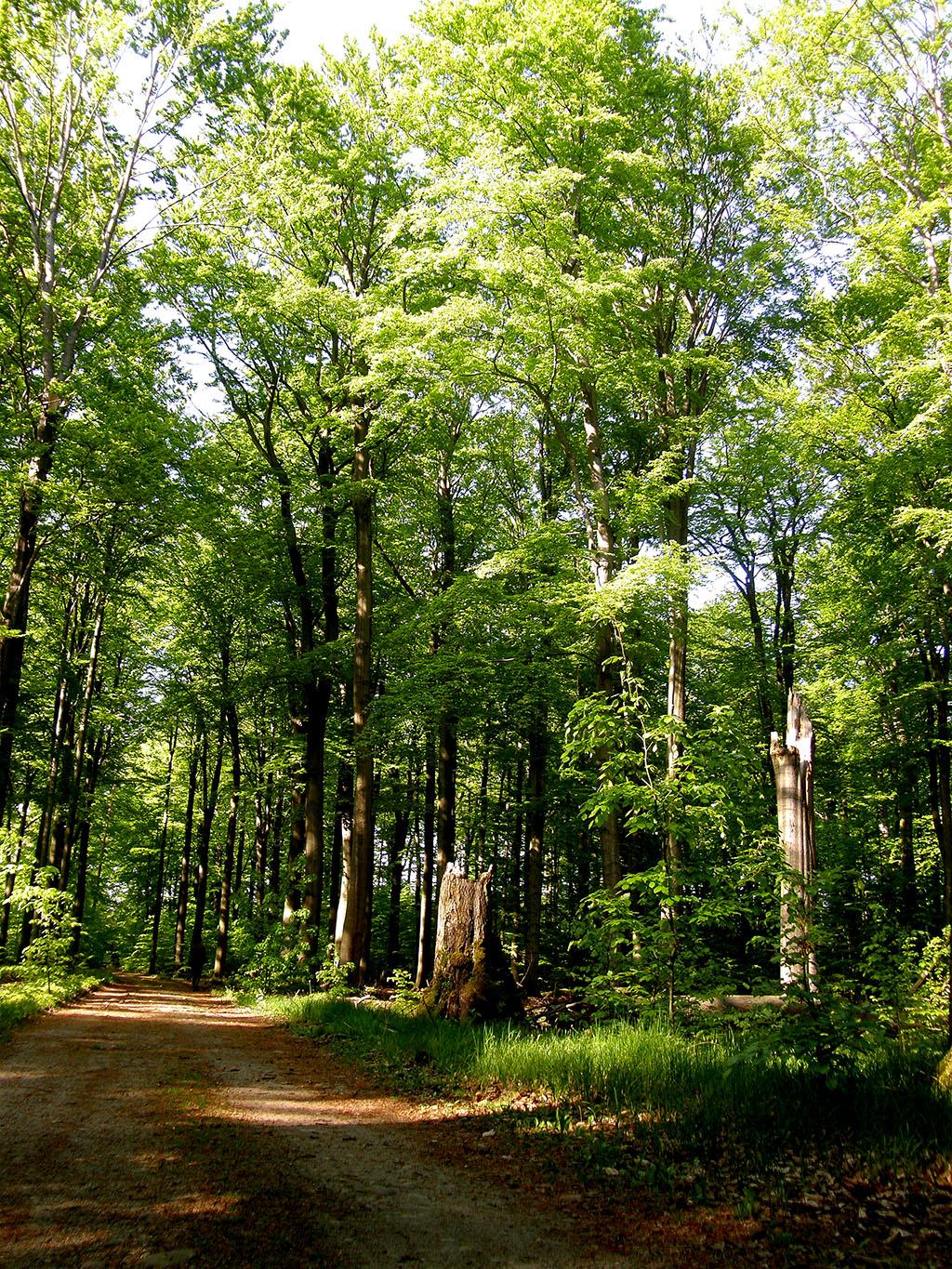




![„Naplotkowała sosna, że już się zbliża wiosna.[…] A wiosna przyszło pieszo - Już kwiaty z nią się śpieszą, Już trawy przed nią rosną I szumią: „Witaj wiosno!”. Jan Brzechwa - Przyjście Wiosny](/documents/1226291/0/Wiosna+1.jpg/8e6d02a0-5ffe-d486-49c3-5fac2b3b23c1?t=1711109156614&width=42)


